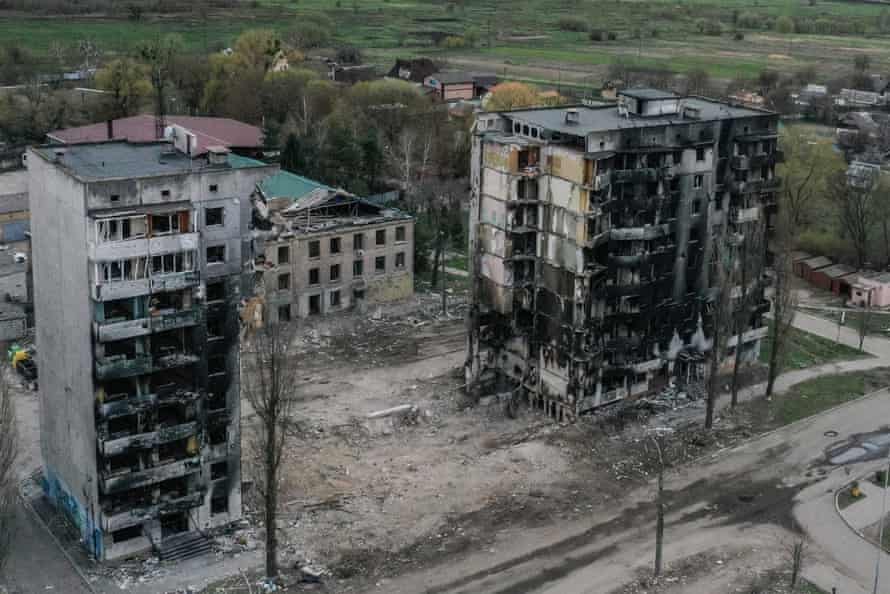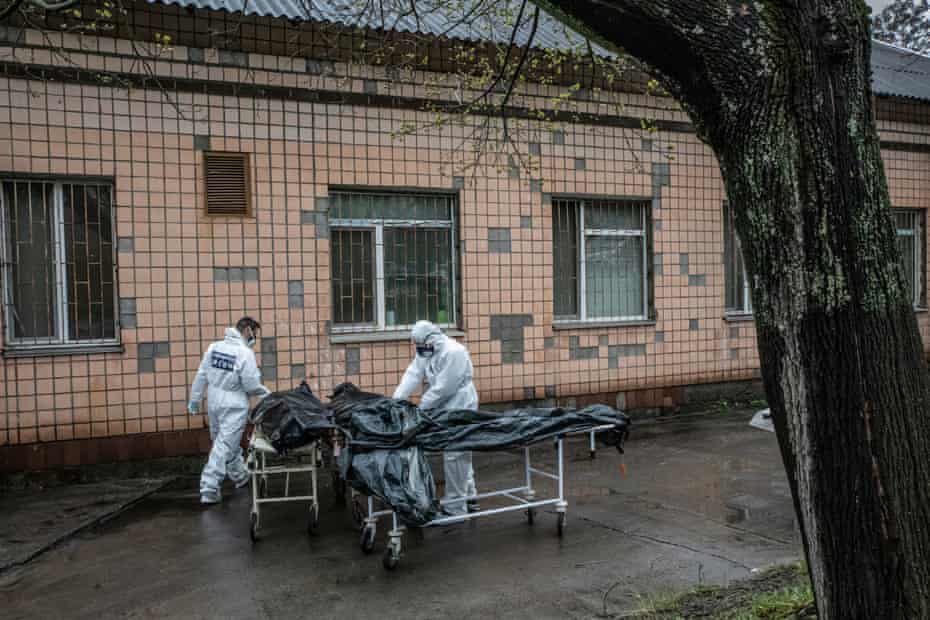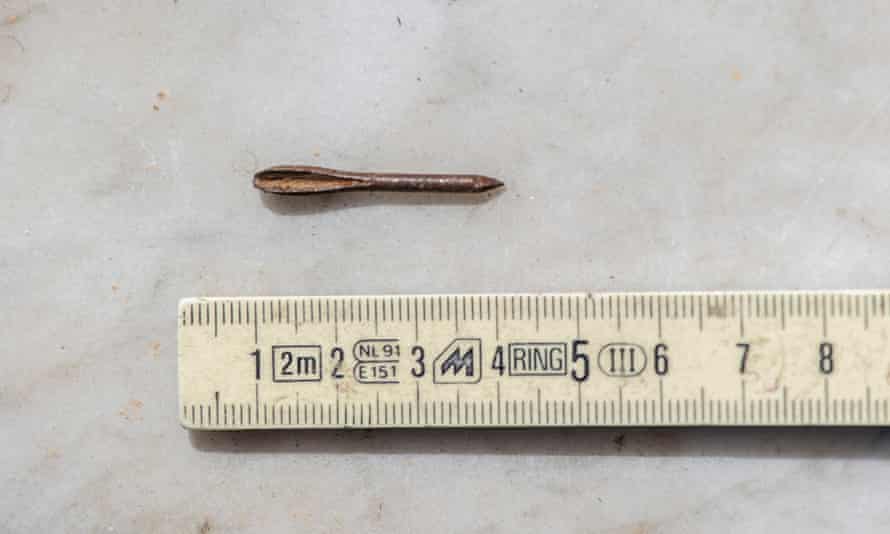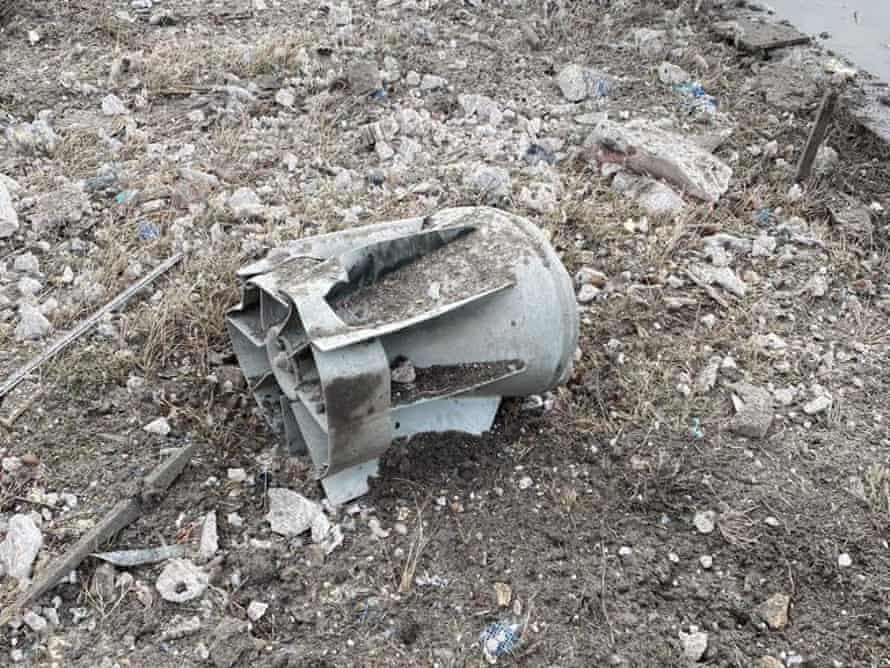At about midnight on 1 March 2022, a Russian air force jet dropped a series of 250kg Soviet-era explosives over Borodyanka, north of Kyiv. They were powerful FAB-250 bombs, designed to hit military targets such as enemy fortifications and bunkers. There were no such structures, however, in this quiet town of 13,000 people.
The bombs fell on at least five residential buildings, splitting them in two. Dozens of bodies were found under the rubble when the Russians withdrew from the Kyiv region in early April, leaving in their path a gigantic crime scene that Ukrainians prosecutors investigating alleged war crimes by Russia and its president, Vladimir Putin, have been working on for weeks .
A war crime is a violation of the laws of war, a component of international law established by the Hague conventions of 1899 and 1907 and further defined by the Geneva conventions of 1949, including the intentional killing of prisoners of war and civilians, torture and the use of illegal weapons. The Guardian has visited the small towns and villages north of Kyiv razed to the ground during the Russian occupation and reviewed evidence found there – as well as other materials from Ukrainian prosecutors – of imprecise munitions such as the FAB-250, metal dart shells and cluster bombs whose use led to the deaths of hundreds of civilians.

FAB-250
The FAB-250s are among the bombs most used by the Russians against Ukrainian towns in the Kyiv oblast, such as Bucha, Hostomel and Borodyanka. According to investigators, at least eight buildings in the towns north of Kyiv were destroyed by these powerful, unguided bombs, causing hundreds of deaths. The FAB-250 is a very inaccurate, airdropped bomb, largely employed by the former Soviet Union in its war in Afghanistan and by Russia in Syria.
The tactics appear to have come directly from the civil war in Syria, which Moscow joined in 2015 to support the Syrian president, Bashar al-Assad. The buildings destroyed in Borodyanka by the FAB-250s exhibit levels of destruction very similar to the razed buildings in Aleppo.
The FAB-250s freefall from bombers and, in their design at least, are intended for use against surface military fortification. Although Russia says it is trying to destroy military targets, evidence collected or reviewed by the Guardian during visits to Bucha, Hostomel and Borodyanka, and independently verified by weapons experts, shows these bombs were dropped on residential buildings and civilian infrastructure.

Flechettes
Pathologists and coroners carrying out postmortems on bodies found in mass graves in the north region of Kyiv have found tiny metal arrows embedded in people’s heads and chests. Independent weapons experts who reviewed pictures of the metal arrows found in the bodies have confirmed that they were fléchettes, an anti-personnel weapon widely used during the first world war.

These small metal darts are contained in field gun shells of a type fired by Russian artillery in the towns of Bucha and Irpin. Each shell can contain up to 8,000 flechettes. Once fired, the shells burst when a timed fuse detonates and explodes above the ground. The fléchette darts, typically 3-4cm in length, disperse in a wide conical arch spanning 300 meters by 100 metres.

On impact with a victim’s body, the dart loses rigidity and bends into a hook, while the arrow’s rear, made of four fins, often breaks away and causes a second wound. The munitions are not prohibited under international law, despite human rights groups long seeking a ban on fléchette shells. However, the use of imprecise lethal weapons in densely populated civilian areas is a violation of humanitarian law.
it’s in our yard. Ірпінь pic.twitter.com/cagQIqtKIH
— Nadezhda Polyakova (@NadezhdaPolyak2) April 25, 2022
n”,”url”:”https://twitter.com/nadezhdapolyak2/status/1518490573065363457?s=21&t=37VXYWvlMB7_zE8a9f4xvg”,”id”:”1518490573065363457″,”hasMedia”:false,”role”:”inline “,”isThirdPartyTracking”:false,”source”:”Twitter”,”elementId”:”1ad5aea0-556b-4505-a8ae-c10a89704209″}}”/>
Fléchettes were dropped during the first world war from the then novel airplanes to attack infantry and pierce their helmets. They were not widely used during the second world war, but re-emerged in the Vietnam war when the US employed a version of them packed into plastic cups.
The Guardian also found a number of fléchettes in Irpin, where several residents said they had found them nailed on to their cars.

cluster bombs
Bellingcat, a nonprofit online journalism collective dedicated to war crime investigations, reviewed some of the pictures collected by the Guardian and confirmed the presence of cluster bombs in towns and villages occupied by the Russians in Ukraine.

Russia’s withdrawal from the Kyiv region in early April has revealed evidence of cluster munitions – shells or bombs that release dozens of smaller munitions – in the wreckage of cars, streets and civilian buildings and in dead bodies. The weapons, banned in more than 100 countries (but not the US, Russia or Ukraine) under a 2008 treaty called the convention on cluster munitions, were unleashed in areas with no military personnel and no military infrastructure. Russia has repeatedly denied targeting civilians and has said Ukrainian allegations of war crimes are concocted.

The submunitions in a cluster bomb are designed to release over a wide area, but they do not always explode, posing a future risk to civilians.

The wrecks of dozens of cars in Bucha and Borodyanka, seen and photographed by the Guardian and reviewed by experts, show the characteristic holes caused by submunitions from cluster bombs used by the Russian military. The use of cluster bombs and cluster munitions has also been widely reported in other areas of Ukraine. When a team from Médecins Sans Frontières (MSF) entered an oncology hospital in Mykolaiv, south-east Ukraine, on 4 April, several explosions took place in close proximity to the staff.

The Guardian found a Russian cluster rocket near a farm village in Hostomel and fragments of tail fins from RBK-500 cluster bombs with PTAB-1M submunitions and cluster rockets in other towns north of Kyiv. The impact of cluster bombs in these areas was so large that in some cases they hit and killed numerous animals. A short distance from the cluster bomb found at Hostomel, the carcasses of two horses show clear marks of their submunitions on their bodies.

In Borodyanka, prosecutors have spent days exhuming dozens of victims who were hastily buried in local cemeteries by relatives during the bombing, because, according to the authorities, many of them were killed by cluster bombs. Coroners in areas north of Kyiv confirmed to the Guardian that they had found fragments of cluster munitions embedded in bodies dug out in the area. The findings are being classified by coroners and will be reported to The Hague, where charges of war crimes committed by Russia could be formalized in the coming months.
www.theguardian.com
George is Digismak’s reported cum editor with 13 years of experience in Journalism